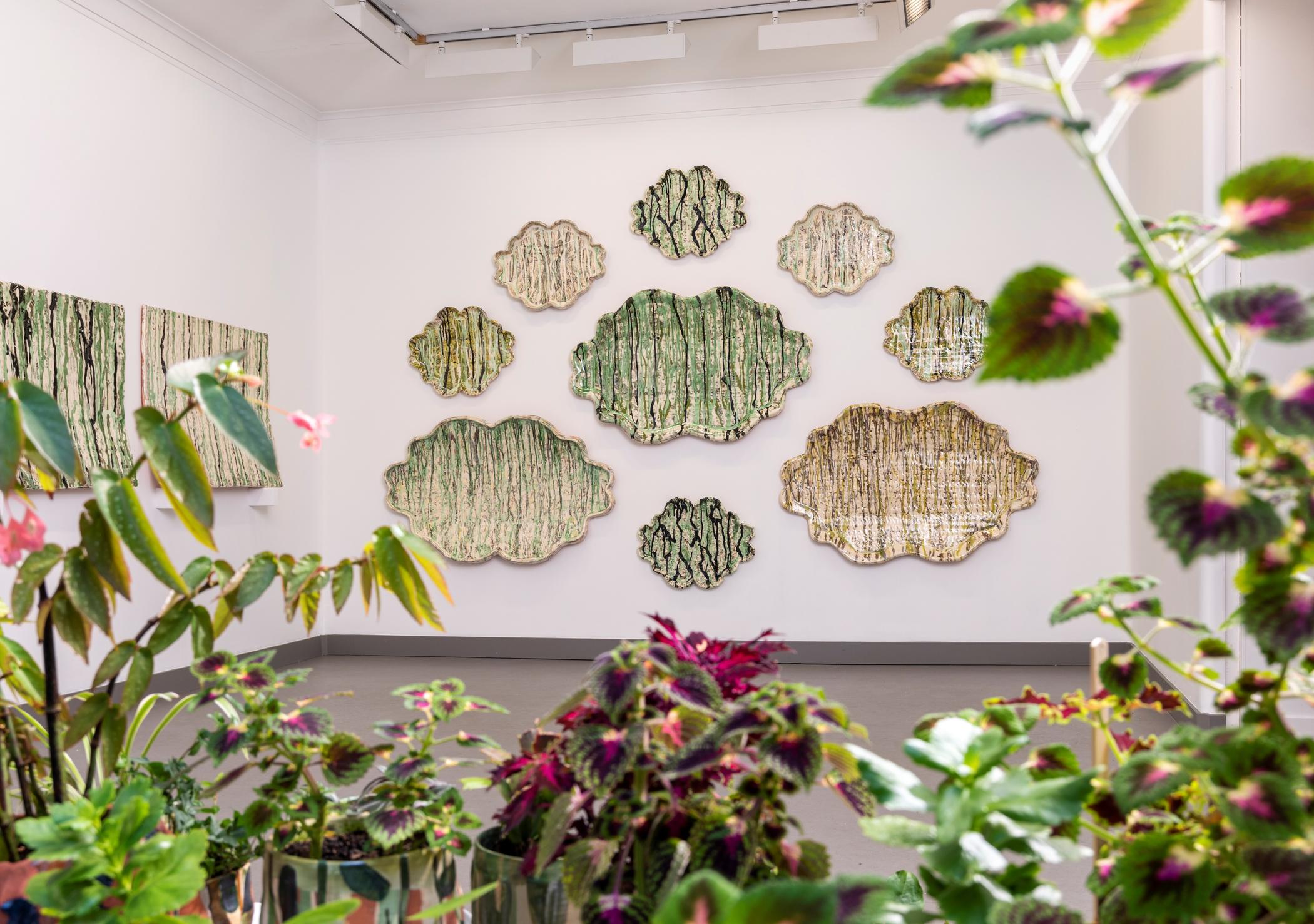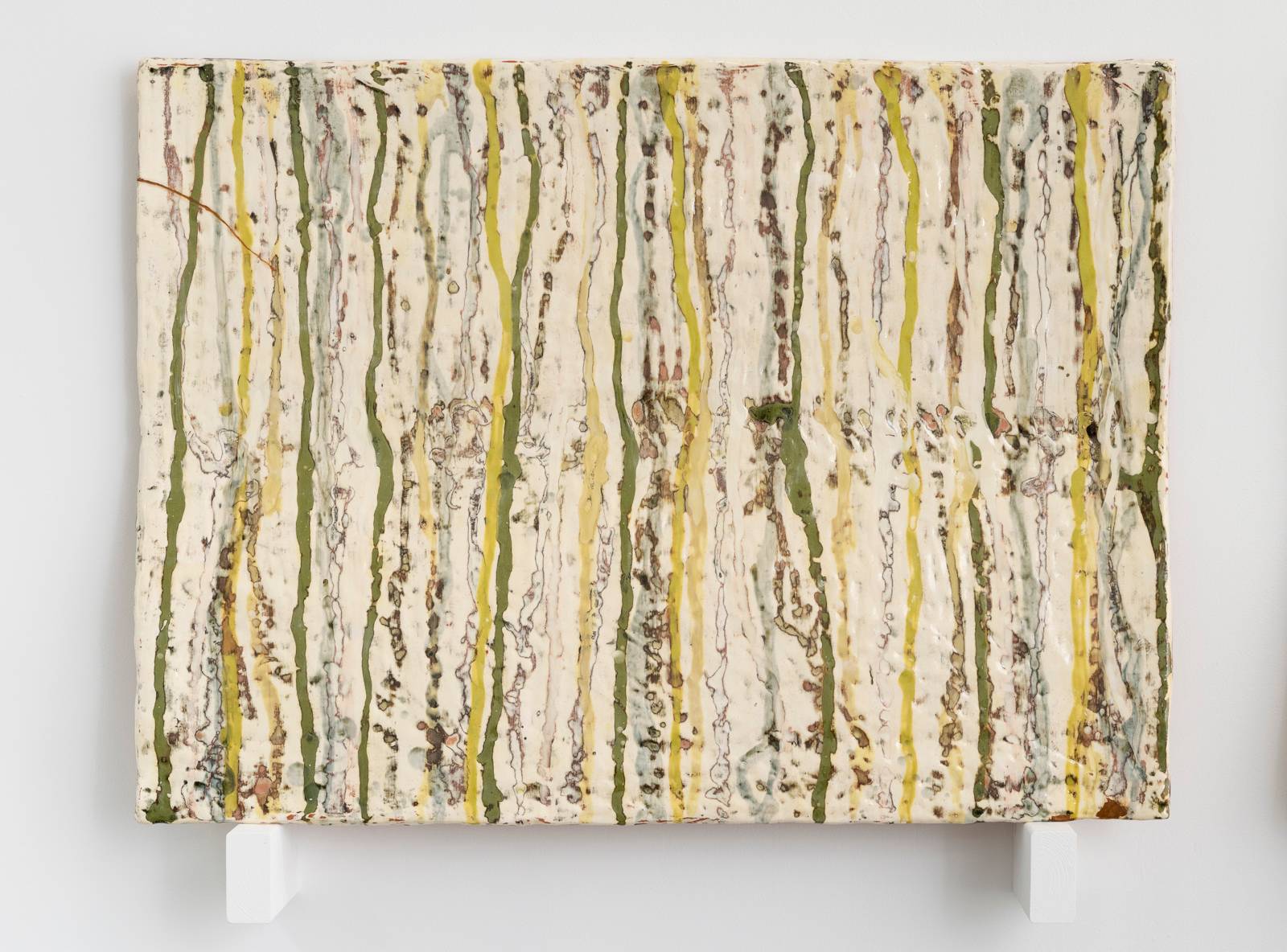Marit Tingleff
Ornaments from Wetlands, Woods, Air and Water
The Window hall and the Cabinet
14.09.2023 – 15.10.2023
Marit Tingleff's latest series of wall-hung dishes, Faience series, and wall-leaning tiles, Standing tiles, are presented in two exhibition rooms. In the green room the colour spectrum of copper and chrome is explored, and in the blue room the colour spectrum of cobalt. The objects refer to the repertoire of ceramic production of everyday things we surround ourselves with, such as tiles and tableware. Dishes in faience were widespread in large parts of Europe in the 18th century. Faience was a cheaper alternative to Chinese porcelain for those who could not afford “the white gold”. The porous and more coarse-grained feel are qualities of faience that Tingleff takes up in her artistic expression.
“Walls filled with dishes and plates. Exclusive and rare in manors and palaces, simple and unpretentious in ordinary homes. Collectables, heirlooms, status and signs of wealth, memorabilia from exotic places.”
For many years Tingleff has been inspired by the historical journey of porcelain from Asia to Europe, and its cobalt blue colour as a metaphor and chemistry in ceramic processes. The baroque design of the dishes is recognizable in her idiom of bends and curves. She scales up to monumental formats where the surfaces are characterized by flowing engobe (clay colours) and picturesque abstractions.
“Blue: air, sky, water, cold, like drinking from a stream, like taking a deep breath on a fresh morning. Cobalt oxide, exclusive, expensive, brutal to extract from the mines. The blue-white porcelain has been known for millennia in the dynasties of China. In our time, the words cobalt, copper, and chrome are politically charged and full of dilemmas”.
Behind the Faience series are laborious processes where repetition of methods and form has become a regular principle. Gravity has been allowed to determine the direction of the flowing movements of the engobe down the surface, as dishes and tiles are lifted during the application. Vertical lines in repetitive rhythms shows signs that the action has been impulsive, yet skilled. This organic play unfolding on the surface is referred to as ornament by Tingleff. In the broadest sense, ornament as a cyclical phenomenon, rooted in the interaction between nature and human unfolding of life.
“I stand in the workshop, the world enters through the ether. I produce, I use materials taken from the earth, I use energy to transform this wet, soft, dry grey into hard and robust, the heat develops colours, which in turn are reminiscent of wetlands, soil, woods, air and water”.
On the windowsill, Tingleff has placed flowerpots closely together. The plant cuttings sprouting from peat-free soil spring out from a collectively funded planting project. She has throwed and decorated the pots with colour and glaze remains in the workshop. The revenues from the sale go, in their entirety, to Sabima, an environmental organization working to spread knowledge about the conservation of species diversity.
Marit Tingleff is a Norwegian ceramist, with education from Bergen School of Crafts (1974–1977). She has established her own workshop in Hønefoss. In 1987 and 1988 she had her international breakthrough at the Scandinavian Craft Today exhibition in Japan and the USA. She was professor of ceramics at the University of the Arts in Oslo in the period 2013–2016. Her work is represented in public and private collections in Norway and abroad, such as the Design Museum Denmark, the National Museum of Norway and the Victoria & Albert Museum in England, to mention some. She has exhibited in several museums and galleries and was, among other things, one of three artists in the touring exhibition Forces in 2019 in KODE, Bergen, and in Sørlandets Kunstmuseum, Kristiansand, and Forces de la Nature in 2018 at the Musée de la Céramique de Sèvres, France.










